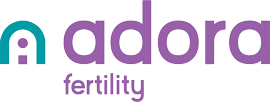What is reciprocal IVF?

Reproductive technology has created a number of pathways to parenthood for a variety of families.
Same sex female couples planning to start a family together can both play a key role in the conception and pregnancy process with reciprocal In Vitro Fertilisation (IVF). This is also known as partner IVF.
What is reciprocal IVF?
Reciprocal IVF (otherwise known as egg sharing or partner IVF) is an assisted reproductive option for lesbian couples to consider when wanting to start a family. With reciprocal IVF, both partners are intimately and biologically involved in the baby-making process.
In this process, the eggs (oocytes) from one partner are fertilised with donor sperm and the embryos are transferred into the other partner’s womb. This means one partner will have the opportunity to carry and birth the baby and the other partner will be its genetic relation.
Reciprocal IVF is an option that is inclusive for both partners from the very start of the conception journey.
How does reciprocal IVF work?
Reciprocal IVF is different from surrogacy or traditional IVF in that it involves partners with female reproductive organs both playing a role in the conception and pregnancy process.
The eggs are produced by one partner and the pregnancy is carried in the uterus of the other partner. This means that if the couple decide to have more than one child, each partner could theoretically have an opportunity to supply the egg or carry the pregnancy.
The decision about which partner provides the egg and which carries the baby can be informed through fertility investigations, general health, family and medical history and age. It is known that egg quality in younger women is superior to that of women who are older, particularly past the age of 35[1].
There are a number of factors to consider about egg quality when considering IVF treatment. In order to make reciprocal IVF work, a sperm donor is required to fertilise the egg.

Finding a sperm donor
In Australia, the sperm donor system is well regulated and provides opportunities for heterosexual, same-sex couples and single women to start a family. A number of fertility clinics, including Adora Fertility, have known donor programs which can facilitate sperm donation and IVF treatment.
Sperm donors through Adora are required to undergo pathology screenings for infectious diseases, semen analysis, genetic testing and provide a comprehensive medical history. They also must undergo mandatory counselling and sign a lifestyle declaration.
It is important to note that in Australia it is illegal to make any type of payment for sperm donation.
There are also a number of laws that govern sperm donation including the reporting of donor birth outcomes and the rights of children conceived via donor sperm[2]. Under current New South Wales (NSW) laws, donors will have no legal rights or responsibilities for any offspring born from donor sperm.
The reciprocal IVF process
Once you have identified a sperm donor, the process of reciprocal IVF begins. The partner who is supplying the eggs will be prescribed daily injectable medication to stimulate egg growth in their ovaries. Your fertility specialist will monitor the process with ultrasounds and blood tests to control the size and quantity of the follicles. This process typically takes two weeks, after which the IVF specialist will perform a small procedure under heavy sedation to collect the eggs.
Once the eggs are retrieved, they are inseminated using the donor sperm. If embryos of a suitable quality are successfully created, they will be frozen, to be transferred to the gestational partner later. The Fertility Specialist may prescribe medications to the gestational partner to prepare their uterus to receive an embryo, or monitor their natural cycle in the absence of medications to determine the optimum time for transfer.
The embryo transfer procedure is a quick and relatively painless procedure, similar to a pap smear. In some instances, it may be possible for cycles to be aligned so that an embryo transfer occurs prior to freezing.

Legal considerations
Scientific advancements have opened up opportunities for many couples and single women to have children.
However, the legal implications are not always straightforward. Traditionally, a woman who gives birth to a baby is legally the mother, however, with reciprocal IVF, the other parent is the one genetically related to the child.
In each Australian state and territory, the same-sex partner of a birth mother who has used Assisted Reproduction Technology to conceive is a legal parent of a child born if they consented to the procedure occurring and is recorded on the child’s birth certificate.
Want to learn more about fertility options? For expert, supportive answers contact Adora Fertility. We have locations in New South Wales, Victoria, Queensland and Western Australia.


